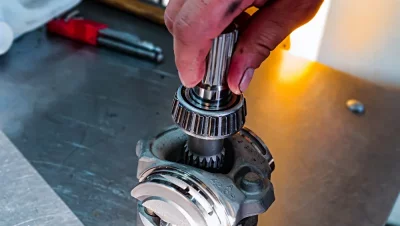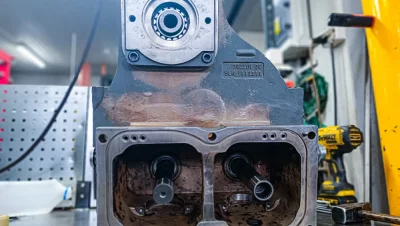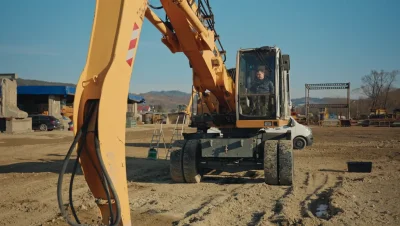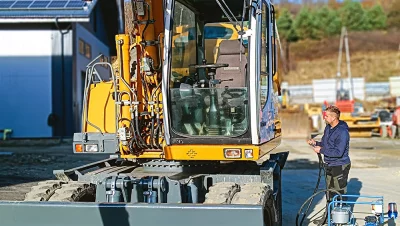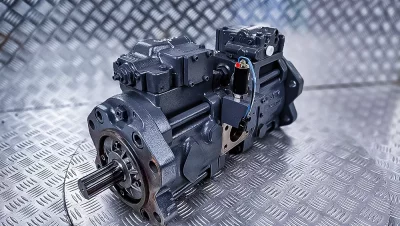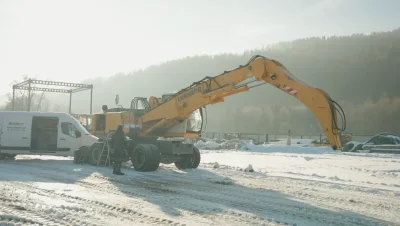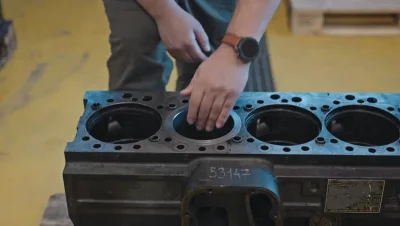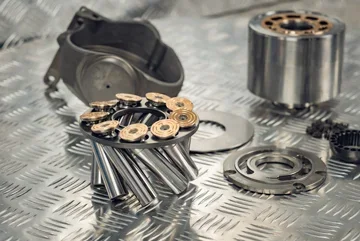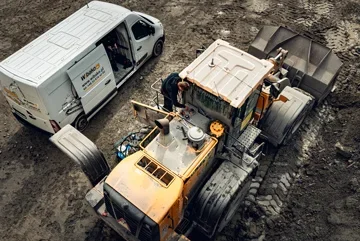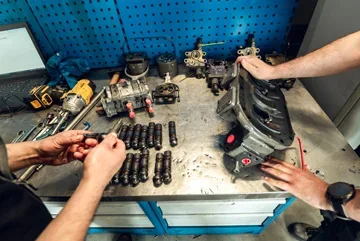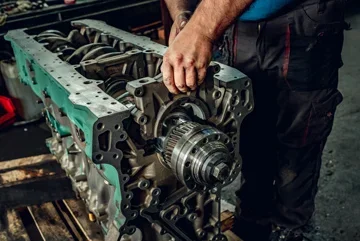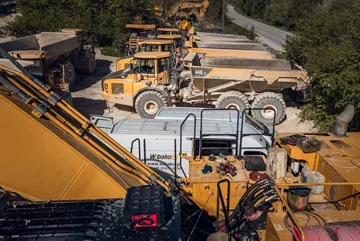Specifics of hydraulic engines and actuators operation
In our blog, we have devoted a lot of space to the hydraulic systems of construction machines, focusing primarily on hydraulic pumps due to the fact that they are somewhat the center of each such system.
Today's article will be devoted to receivers in hydraulic systems, so the subject of consideration will be hydraulic actuators and hydraulic engines.
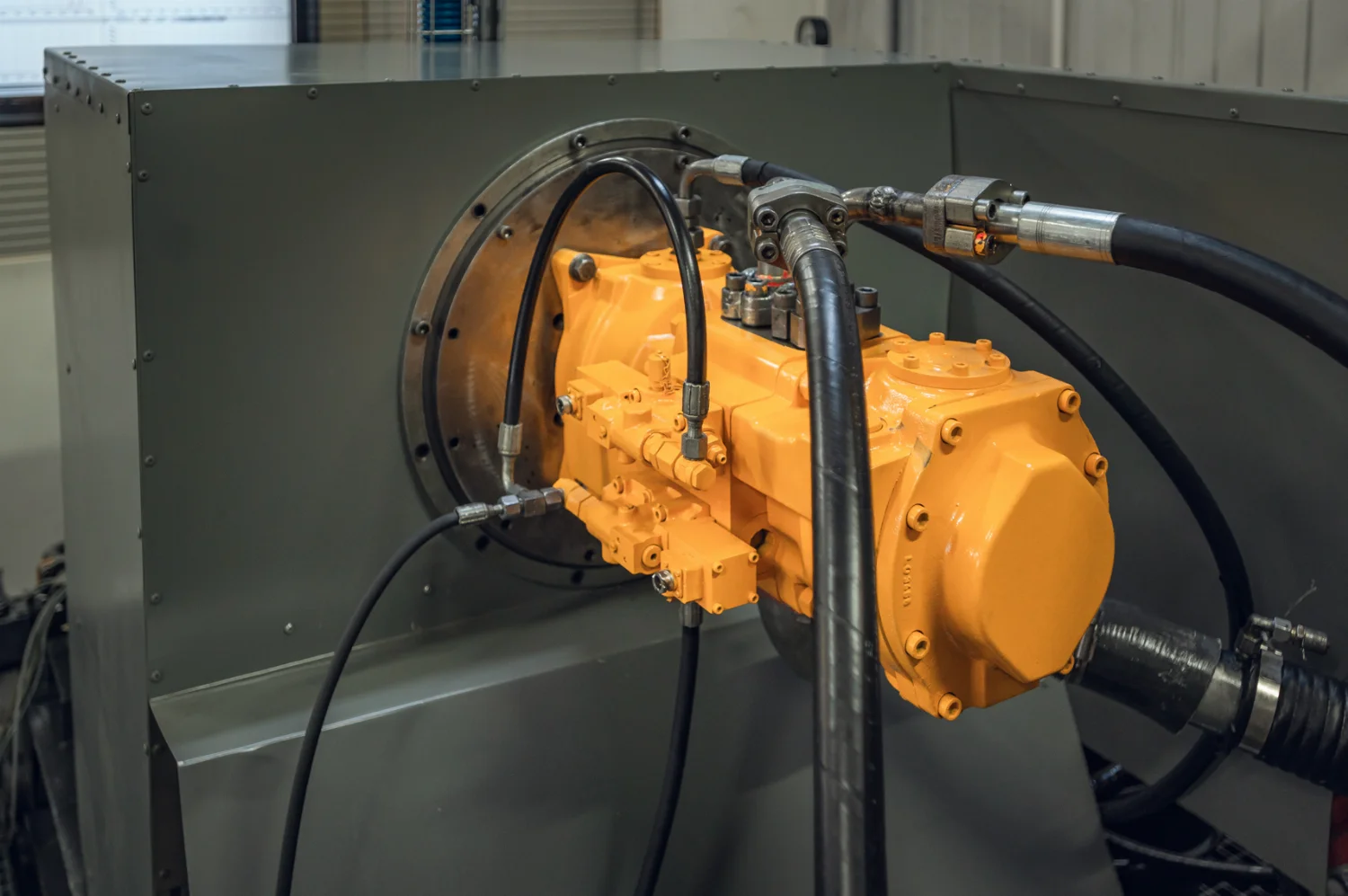
Hydraulic actuator - description, construction, types and application in construction machines
A hydraulic actuator is a device used in construction machines for lifting, moving or manipulating heavy objects. This is done by using the force generated by the hydraulic fluid, which is pumped by the hydraulic pump from the tank.
Hydraulic actuators convert fluid energy into linear motion. The construction of the actuator consists of several basic elements that ensure its proper functioning.
The first of them is the cylinder, a pipe containing inside another element of the actuator, a movable piston, which moves under the pressure of hydraulic fluid. The flow of hydraulic oil to the cylinder is controlled by valves, and the fluid conduction is handled by hoses or hydraulic pipes, which connect the actuator with the rest of the hydraulic system.
Let the uncomplicated construction not deceive anyone, because actuators are very efficient and it is best to summarize their operation by stating that the power lies in simplicity.
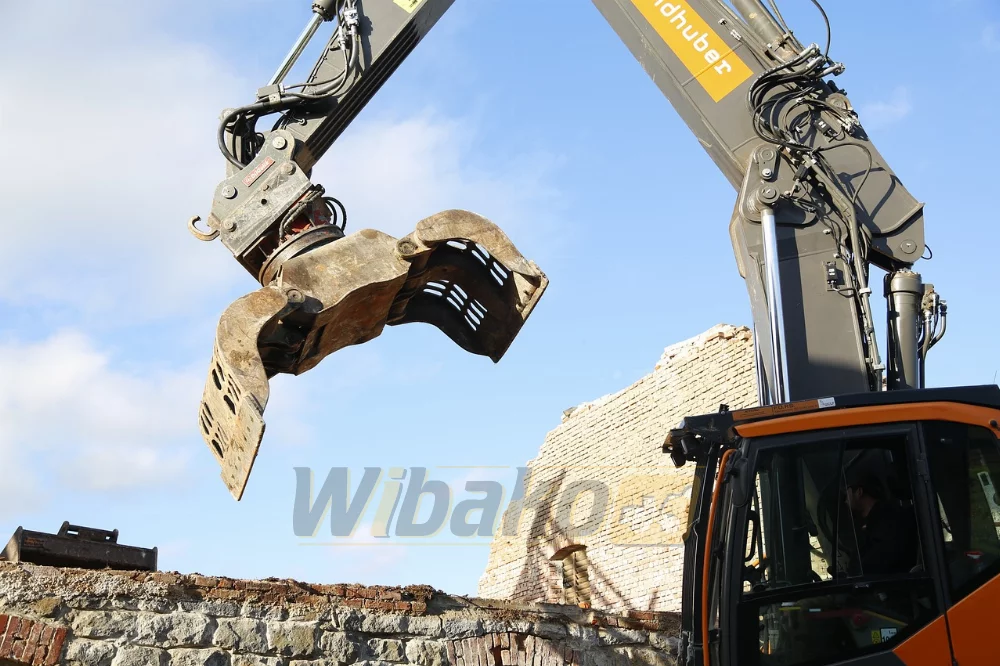
Types of hydraulic actuators
In construction machines, we can distinguish several types of hydraulic actuators, and the most common are:
- telescopic actuators - this is an actuator whose construction consists of several cylinders of different diameters, each of which is embedded in the middle of the previous one.
- single-acting actuators - such an actuator is only capable of generating force and displacement in one direction. The return to the original position is achieved through another energy source, a spring or its own mass.
- double-acting actuators - contrary to the previous type, it can move in both directions, thanks to having two chambers in the cylinder. Hydraulic oil is supplied to one side of the cylinder through an open control valve, and when the piston is in the desired position, the valve is closed, and the one at the other end of the cylinder opens. The double-acting actuator does not have a spring, which is used in single-acting actuators to force the return movement of the piston. Here this movement is controlled and this is the main difference between the two types.
Application of the hydraulic actuator in construction machines
The previously mentioned advantages of hydraulic actuators find wide application in individual construction machines. Power hydraulics is used in such machine functions as:
- operating the excavator bucket - hydraulic actuators are used to lift and lower the excavator bucket, allowing the machine to perform such tasks as digging and moving soil
- adjusting the tilt of the bulldozer plow - actuators allow for controlling the tilt of the plow in the bulldozer, thanks to which it can work effectively when moving the ground.
- operating the crane arm - cranes use hydraulic actuators to lift and lower the arm, allowing for lifting loads and moving them by the crane.
- controlling telescopic sections - in telescopic loaders, actuators are used to control the length of the boom or operations such as lifting and lowering the loader bucket, allowing it to transport working materials.
Hydraulic actuators enable construction machines to perform various operations thanks to the ability to generate large force, and at the same time they are relatively small, which makes them an extremely useful element of the hydraulic system.
We presented in this part of the text the first receiver of the hydraulic system. In the following paragraphs, the operation of the second receiver, the hydraulic engine, will be shown in a similar way.
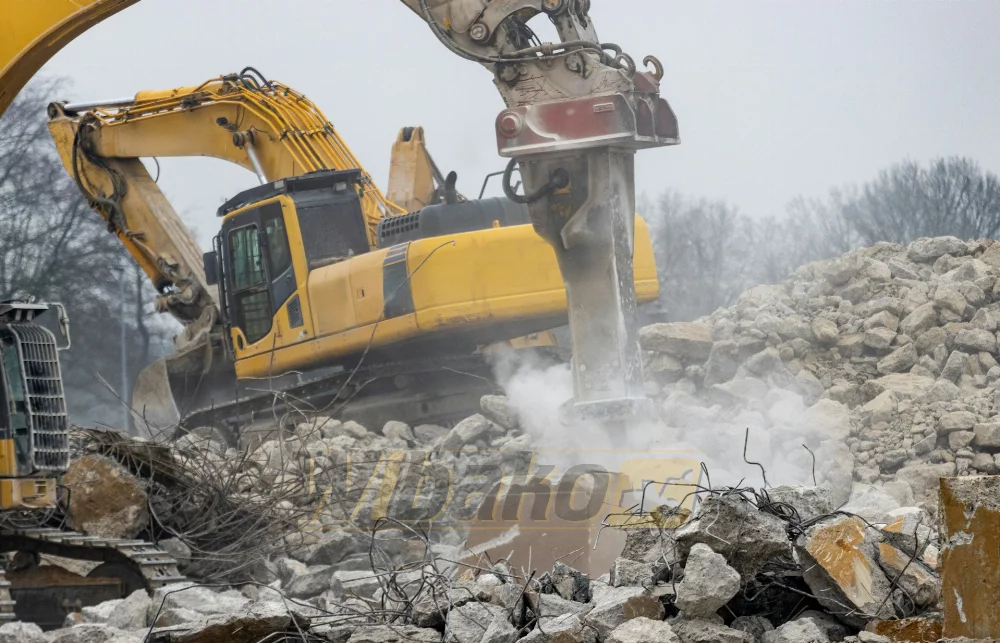
Hydraulic engine and its role in the hydraulic system
Receivers of fluid energy, apart from the hydraulic actuator, can also be hydraulic engines, which convert the aforementioned energy into rotary motion. Construction machines use various types of hydraulic engines depending on specific needs and applications.
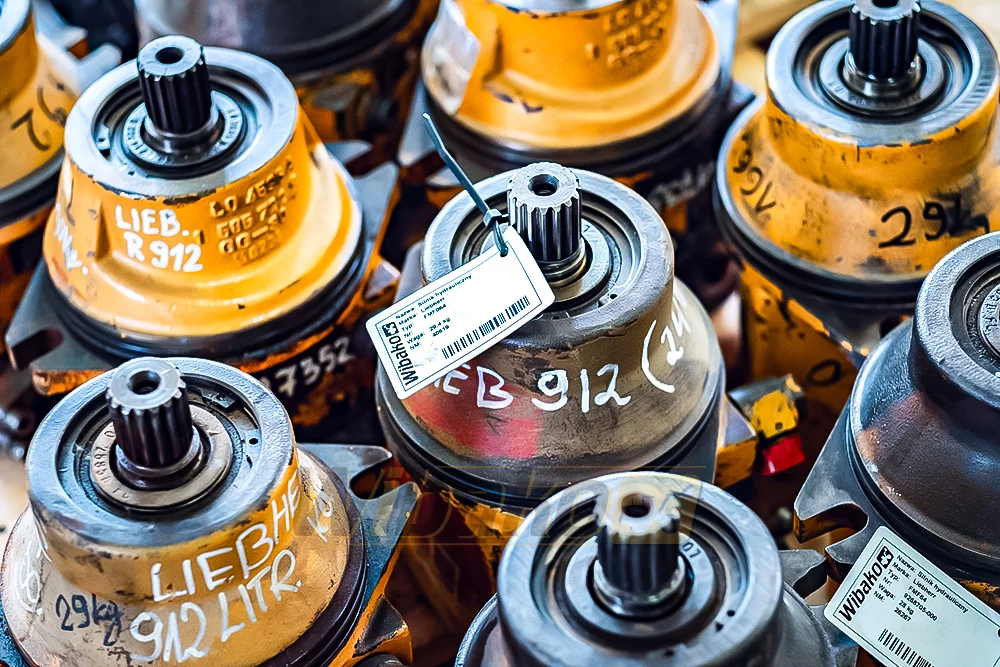
How does a hydraulic engine work?
As mentioned above, the operation of a hydraulic engine is based on the principle of converting energy of hydraulic fluid into mechanical energy, which enables the machine to move, change speed and torque.
This process starts with the delivery of fluid by the pump to the engine, where it is subjected to high pressure. It then goes to the working part of the engine and is transferred to the shaft, which is set in rotary motion, thanks to which it is possible to convert fluid energy into mechanical energy.
The construction of a hydraulic engine is very similar to a hydraulic pump, with the difference that in pumps the purpose of operation is opposite, as they convert mechanical energy into fluid energy.
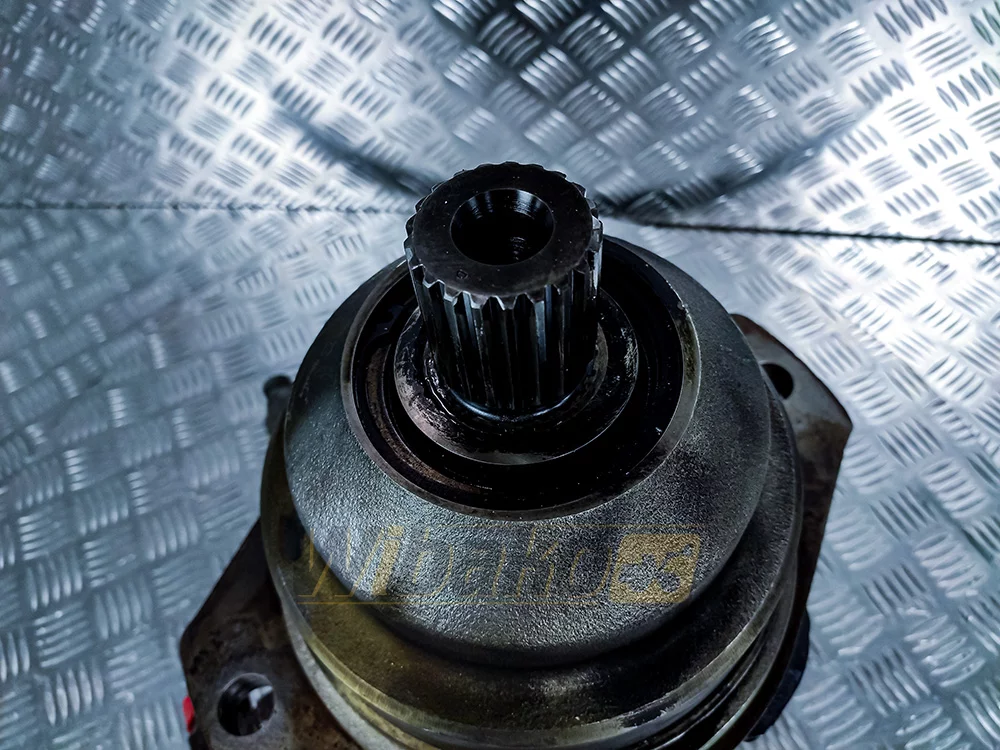
Types of hydraulic engines
The working part of the engine may differ in construction and due to it we distinguish several types of hydraulic engines:
- piston - piston engines are the most common type of hydraulic engine in construction machines. The working element that sets the fluid in motion are pistons.
- gear - these engines use a gear mechanism to set the hydraulic fluid in motion.
- vane - in vane engines, the built-in vane rotor is responsible for generating fluid motion.
The type of hydraulic engine is chosen based on the requirements of a specific construction machine. Factors such as application and working conditions of the owned equipment should be taken into account.
Each of the mentioned types of engines has its advantages and limitations, so it is worth analyzing carefully which type will be the best choice for the efficiency and reliability of our machine.
Drive hydraulic engine
Hydraulic engines are often used to drive the movement of a construction machine. Hydrostatic drive is a popular solution used in construction machines, such as excavators, loaders, bulldozers, or dumpers.
The hydraulic fluid can be transferred from the pump through the distributor or bypassing it, depending on whether we are talking about an open or closed system, thereby driving the hydraulic engines mounted on the machine's gearboxes.
The rotary motion of the hydraulic engine is further transferred by the gearboxes to the wheels or tracks. Thanks to the energy generated by the engines, the machine can move forward, backward and rotate.
Repairs of hydraulic engines
In case of failure or decrease in the efficiency of the hydraulic engine, it may be necessary to carry out a repair. A detailed diagnosis of the problem should be the first activity on the way to solving the failure. Evaluation, and then repair or replacement of components is the standard path in the repair process.
Each engine component must be carefully evaluated, it is necessary to check the state of wear, damage or complete destruction.
Based on the evaluation of components, it is decided which of them are suitable for further use. Usually, damaged components or completely worn out ones are replaced. A serious task is to reassemble the disassembled engine into a whole.
If at this stage there are any omissions or simply someone inexperienced, lacking professional knowledge, undertakes it, it can result in further problems in the future.
Therefore, such a complicated thing as the repair of a hydraulic engine is better entrusted to a service that has specialized knowledge and tools. At this point, we would like to introduce the Wibako repair service, where we can offer, among others, hydraulic engine repair.
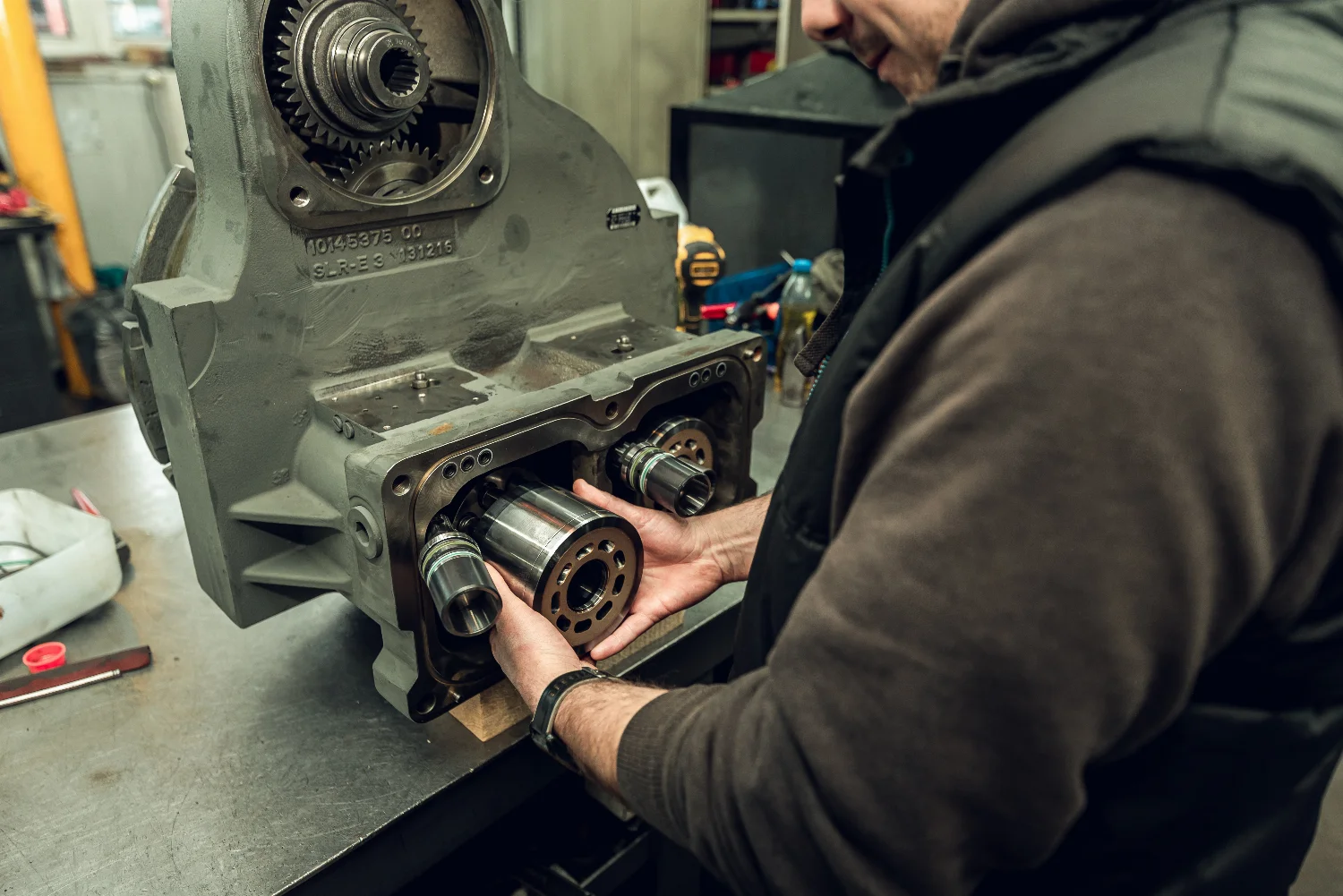
Wibako power hydraulics service
Wibako has many years of experience in working with power hydraulics elements, such as pumps and hydraulic engines. We carry out repairs of hydraulic engines of popular manufacturers, such as Liebherr, Rexroth, Linde, or Kawasaki. Below we present an example of a hydraulic engine repair - Caterpillar M2X120B carried out in our factory workshop.
The device came from a Caterpillar 320B crawler excavator and after disassembling the engine and diagnosing individual parts, it was decided that the entire rotary group was suitable for replacement. The replaced components included: cylinder, ball, separator, pistons, brake disc. Then the hydraulic engine was thoroughly cleaned, and then assembled into a whole.
The guarantee of a well-conducted repair is the successful passing of the unit test on the dynamometer - the tightness of the working surface of the new rotary group, the functioning of the control elements and gear shifting were checked. The hydraulic engine passed the tests and it could be packed and sent back to the owner.
We have carried out hundreds of similar repairs not only of hydraulic engines, but also of pumps. In one of the articles on our blog, you can read about a specific case of a hydraulic pump LPVD107 repair, and more broadly about power hydraulics here.



